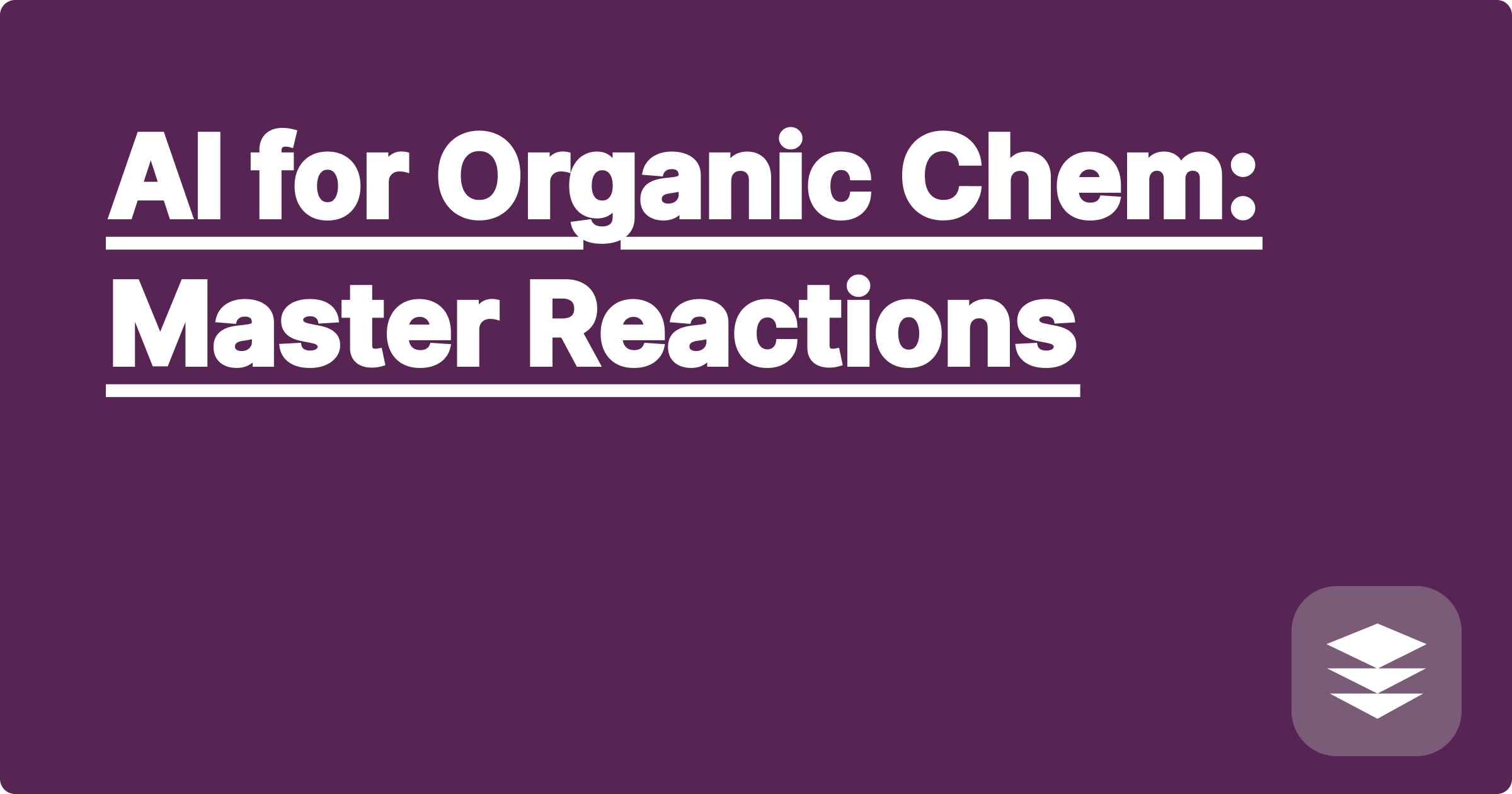
For STEM students, especially those grappling with the complexities of organic chemistry, mastering reactions can feel like climbing a slippery slope. The sheer volume of reactions, mechanisms, and reagents can be overwhelming, often leading to late-night study sessions and a sense of being constantly behind. But what if there was a way to not just keep up, but to excel, by leveraging the power of artificial intelligence? AI is no longer a futuristic concept; it's a readily available tool that can transform how we learn and conduct research, particularly in challenging fields like organic chemistry.
This blog post isn't about the generic AI tools you already know. It's about diving deep into the less-explored AI landscape to uncover hidden gems that can give you a significant edge. We'll explore how these tools, combined with a strategic approach, can revolutionize your understanding of organic chemistry reactions, boost your academic performance, and even streamline your research. Think of this as your insider's guide to unlocking the full potential of AI in your STEM journey.
Organic chemistry is notorious for its intricate reaction pathways and seemingly endless list of reagents. Students often struggle to connect the dots between different reaction types, understand the underlying mechanisms, and predict the products of complex transformations. Traditional learning methods, like memorizing flashcards, can be inefficient and often fail to provide a deep understanding of the subject matter. Furthermore, keeping up with the latest research and advancements in the field can be a daunting task, adding another layer of complexity to the learning process. This information overload can lead to frustration, decreased motivation, and ultimately, a negative impact on academic performance. The challenge lies in finding a way to efficiently process this vast amount of information, connect the seemingly disparate pieces of the puzzle, and develop a true mastery of organic chemistry reactions.
Imagine having a personalized AI tutor available 24/7 to guide you through the intricacies of organic chemistry. This is the promise of Generalized Personal AI (GPAI), a concept that envisions AI as a collaborative partner in learning and research. While a fully realized GPAI is still on the horizon, we can leverage existing AI tools to create a similar experience. Tools like ChatGPT and Wolfram Alpha can be invaluable for understanding reaction mechanisms. For instance, you can ask ChatGPT to explain the steps involved in a Grignard reaction or use Wolfram Alpha to calculate the theoretical yield of a specific synthesis. Beyond these popular tools, exploring niche AI platforms can unlock even greater potential.
Start by identifying your specific learning needs. Are you struggling with specific reaction types? Do you find it difficult to visualize reaction mechanisms? Once you've pinpointed your weaknesses, you can tailor your AI tool selection accordingly. For visualizing molecular structures and reactions, consider using MolView or MarvinSketch. These tools allow you to build and manipulate 3D models of molecules, providing a more intuitive understanding of their spatial arrangements and how they interact in reactions. To delve deeper into reaction mechanisms, explore Reaction Explorer, a tool that allows you to visualize and analyze reaction pathways step-by-step. By integrating these tools into your study routine, you can transform passive learning into an active and engaging experience.
Let's say you're trying to understand the SN1 reaction mechanism. You can use ChatGPT to provide a step-by-step explanation and then use MarvinSketch to visualize the carbocation intermediate. You can even ask ChatGPT to generate practice problems and then use Wolfram Alpha to verify your answers. In a research setting, AI can be used to predict the outcome of novel reactions, analyze complex datasets, and even design new synthetic routes. For example, tools like Synthia can assist in retrosynthetic analysis, helping researchers plan the synthesis of complex molecules. These practical applications demonstrate how AI can be a powerful ally in both academic and research pursuits.
The key to effectively using AI in organic chemistry is to treat it as a supplement, not a replacement, for traditional learning methods. Don't just passively consume the information provided by AI tools. Engage actively by asking questions, exploring different perspectives, and challenging the AI's responses. This interactive approach will solidify your understanding and help you develop critical thinking skills. Furthermore, consider using AI to create personalized study plans and track your progress. By setting clear goals and monitoring your performance, you can stay motivated and ensure that you're making the most of your study time. Finally, don't be afraid to experiment with different AI tools and find the ones that best suit your learning style and research needs. The world of AI is constantly evolving, so staying curious and exploring new tools will keep you at the forefront of this exciting field.
To truly master organic chemistry reactions, embrace a proactive approach to learning and leverage the power of AI. By integrating the strategies and tools discussed in this blog post, you can transform your understanding of organic chemistry, boost your academic performance, and unlock new possibilities in your research endeavors. Start exploring these AI tools today and discover the transformative potential of intelligent assistance in your STEM journey. The future of learning is here, and it's powered by AI.